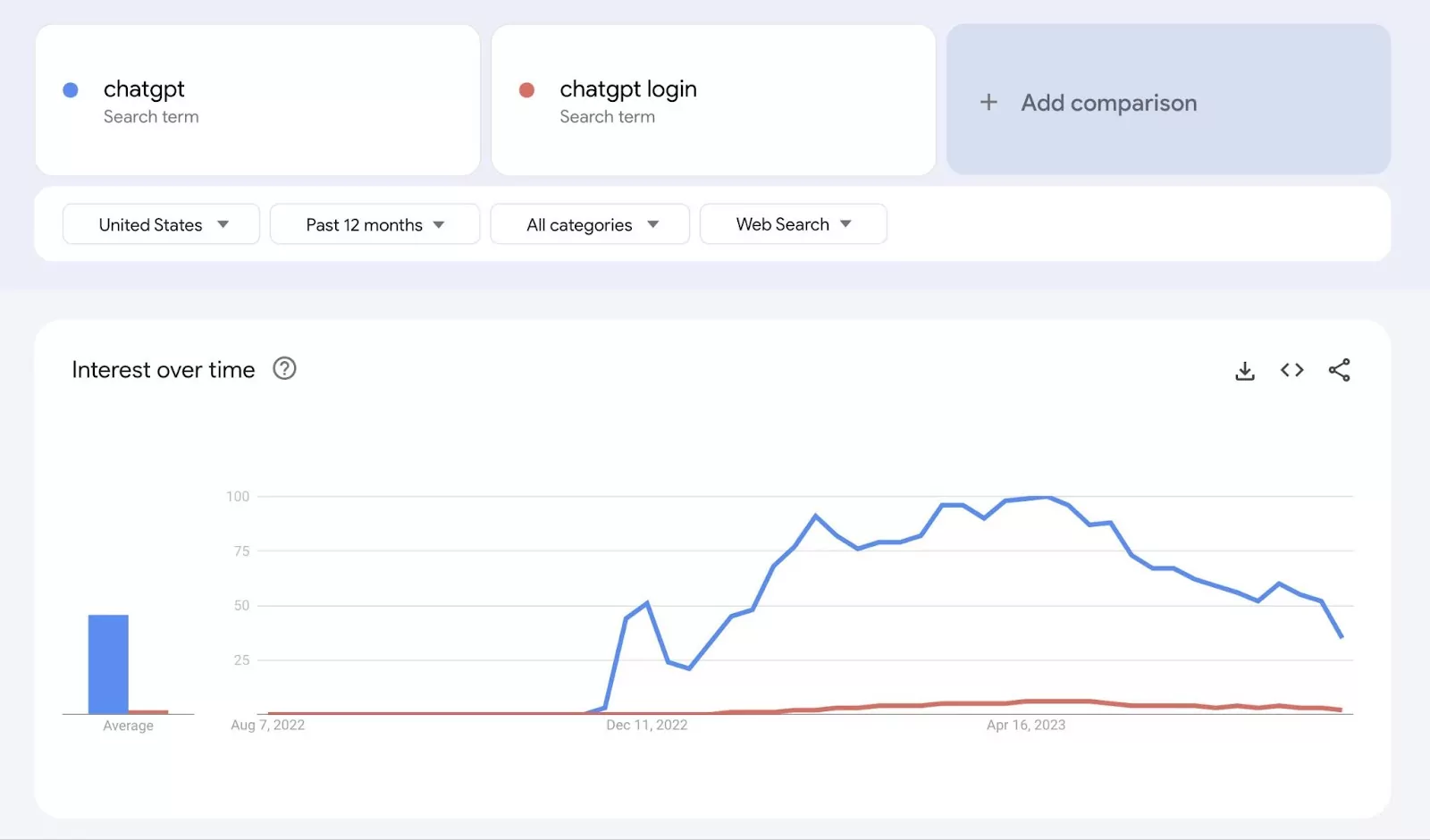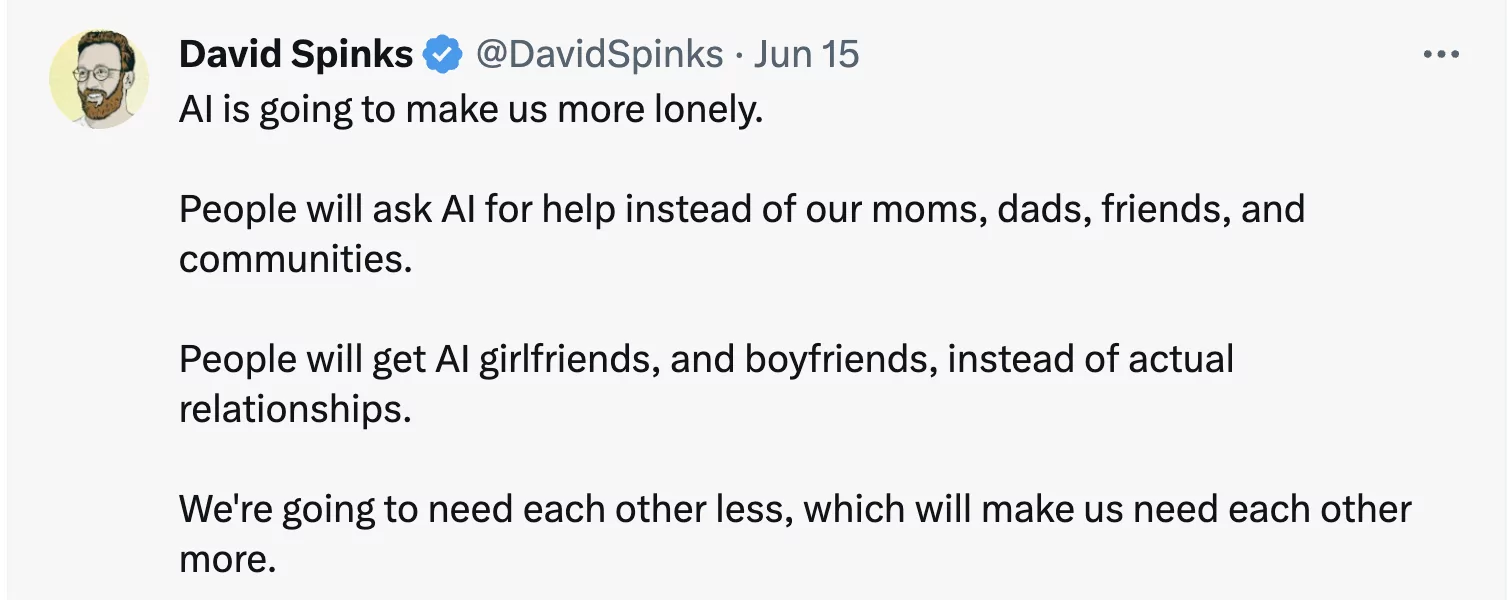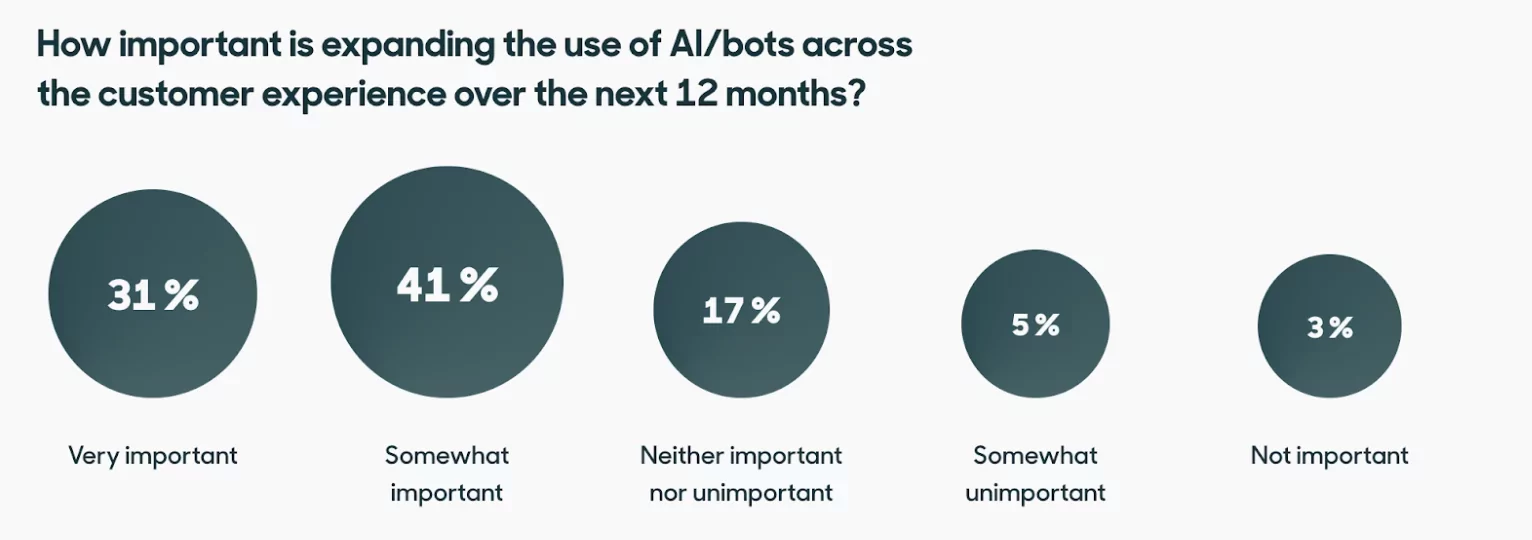The customer service landscape is evolving at a lightning pace, and it’s natural to worry about keeping up with the latest trends, especially when it comes to AI and automation. The prevalence of chatbots is staggering — 85% of customer service interactions now begin with a chatbot, and about 80% of marketers are already using chatbots to some extent.
It’s a wild time on the internet that feels like discovering a new planet where no one knows the rules yet.
But here’s the catch: in the race to adopt AI, don’t overlook its effect on your customer service strategy and ignore the value of maintaining — or better yet enhancing — the human connection you and your team enjoy with your customers.
Let’s dig into what not to do so you can avoid falling behind and learn why embracing AI while maintaining the human touch that sets your business apart is vital.
AI Misstep #1: Assuming AI is a passing fad
A recent trend on social media is people posting screenshots of Google Trends that shows a waning interest in ChatGPT.

If you saw this and thought AI was a passing fad, think again.
- Between 2015 and 2019, the number of businesses utilizing AI services grew by 270% (this is two years before ChatGPT launched AI into the mainstream!)
- 86% of CEOs claimed AI would be “mainstream technology” in their company in 221
When it comes to AI in customer service, specifically, a new Hubspot survey found that:
- 79% of customer service professionals say AI/automation tools are important to their overall strategy
- 41% of customer service professionals say they use generative AI to help write responses to service requests
- 50% say these AI-generated responses make messages more personalized
Needless to say, AI is the new status quo. So much so that even customers expect your team to take advantage of these new tools in order to meet their increasing expectations.
Fail to meet these elevated expectations, and you may disappoint or frustrate your customers, leading them to go somewhere else. Last year, nearly half of customers switched to another company because the other company provided a better customer experience.
Bottom line: Stay ahead by strategically integrating AI solutions and continuously improving your customer service processes.
AI Misstep #2: Neglecting to balance AI and the human touch
Generative AI offers incredible benefits to businesses in terms of efficiency and productivity. However, there is also an unintentional ripple effect of relying heavily on AI: the potential decrease of human empathy in customer interactions.
David Spinks, the author of The Business of Belonging, recently raised concern about this general phenomenon on social media, explaining how the more rely on AI, the more we’ll need each other.

What can your team do to avoid losing the characteristic subtleties of human interaction while embracing AI?
A surefire way to prevent your team from sounding like robots is to lean into AI. The key here is to craft prompts that provide the empathetic contexts required to generate more heartfelt responses.
Share these examples with your team and explore ways to adapt them to your specific needs:
- Take the drafted response below and make it more friendly, but keep it to no more than three sentences: [add drafted response here].
- Help me write a concise and empathetic SMS response asking a customer to share the steps I should take to replicate the issue they’re reporting.
- Compose a short, friendly message our team can send after they close a customer service ticket that prompts the customer for honest feedback.
Pro Tip: If you use OpenPhone, you can then save any of these messages as snippets you can easily send again later.
While the output of these prompts aren’t written by a human, they’ll be prompted by one. And that matters.
Striking the right balance between AI and your team paves the way for delivering outstanding customer experiences — including the kind that can turn a dissatisfied customer into one of your loudest cheerleaders.
Bottom line: Take every opportunity to use the time saved by using AI and automation for more mundane and repetitive tasks to spend extra time on customers when they need a human the most. Spend time on customer service training for your team, making sure your team is available for incoming calls and personalize customer experiences by developing deeper relationships.
AI Misstep #3: Believing AI just “writes stuff”
There’s a limiting belief that generative AI, like ChatGPT, merely writes based on prompts but there’s so much more to this technology. If your staff feels overworked, for example, AI can help provide a seamless experience on the backend without adding much cost to your bottom line.
- Call transcription: Automatic call transcriptions after any recorded call let your team easily reference information later and follow up faster. This feature is available with OpenPhone for any Business plan users.
- Fraud detection: AI can assist in identifying and preventing fraudulent activities, protecting both the business and the customers.
- Quality assurance and training: AI can monitor and analyze customer interactions and customer sentiment and guide your team to handle interactions with more empathy and understanding.
- Knowledge management: AI-powered systems can centralize and manage a knowledge base, making it easier for customer service agents to find the information they need. This can significantly reduce the time spent searching for answers to customer questions.
Bottom line: Instead of wrongly assuming AI is a one-trick pony, only capable of writing based on prompts, keep an eye out for AI tools that also augment your team and deliver seamless customer experiences.
AI Misstep #4: Failing to stay on top of AI trends
The future of customer service for small businesses depends on using AI strategically to improve efficiency and provide personalized experiences that keep customers coming back. Studies show that most customer service teams plan to expand their use of AI or bots in the coming year(s).

What does the future of AI look like and what does it mean for your business? Hard to say right now. ChatGPT isn’t even a year old.
Wherever the next leaps in AI technology take us, never forget: while AI and automation are valuable tools with substantial benefits for your business, the human element remains crucial in customer service. Your team’s ability to handle complex situations, provide empathy, and offer emotional support sets you apart in a competitive market. Preserving the human touch builds a strong brand reputation and fosters sustainable growth.
Bottom line: To stay ahead, plan for the future now. This means keeping up with industry trends, learning to use AI and automation to set up a responsive workflow, and training your team with ever-changing AI and automation best practices. In the meantime, continue to nurture relationships with past, current, and potential customers.
Sure step: Preserve human connection while embracing AI
The key to success in the customer service space race lies in embracing AI while preserving human connection.
Stellar use of AI enhances efficiency, productivity, and customer experiences. By using AI to support your team’s efforts, automating repetitive tasks, and learning from AI-generated data, you can focus on what matters — providing exceptional service and building lasting relationships with your customers.
Are you setting your small business up to stay competitive? Discover more customer service trends shaping 2023.

